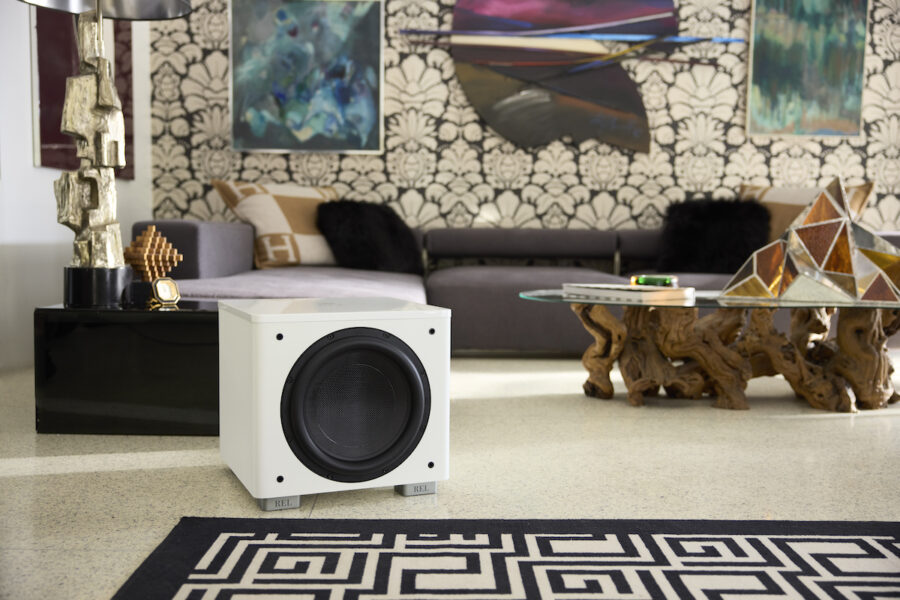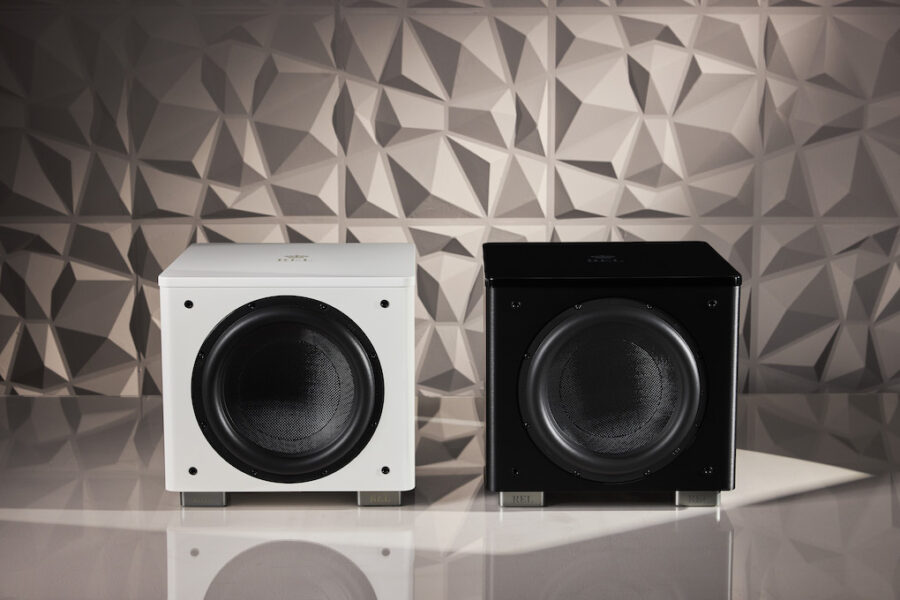Blog
Elevate Your Space
Serie HT Now Available in White

In interior design, white defines space and creates opportunity for the eye to travel. It is this duality that seems always to follow white. When applied to objects – simple, everyday objects like a subwoofer – white allows the object to ascend. From being an everyday tool, it becomes something special, a design element itself. Something iconic.
REL has offered subwoofers in high gloss white for almost twenty years. We did so then and do so now because as designers ourselves we grasp that subwoofers, necessarily larger than some may find ideal, become very much more agreeable to place into a well-designed living room when beautifully finished in five to twelve coats of hand rubbed high gloss white lacquer.
The color white means so much to so many. White is the color of purity. The Native Americans saw white as representing peace, of snow. In Japan, white is considered the sacred color of the gods, while to the Chinese white corresponds with metal and represents gold. There it symbolizes brightness and purity. To some, it is funereal, the color of mourning. To others, the color of purity and joy that signifies a wedding.
But perhaps the best explanation of white comes from modern color theory. White is the sum of all colors; every frequency of visible light is present in white. That simple reality underpins why it can mean so many things to so many. Put all the colors in the rainbow together and one gets white, the sum of all things. Everything can harmonize with white, nothing and no one is left out.
Many rooms are painted in shades of white, or in various pastels, soft shades of yellow, light blue or pink tones abound. Beautiful light greys have become honorary members of the pastel brigade.

When we set out to build a white finish for our home theatre range of subwoofers, we already had the paint portion of it down cold. REL White seems to be a pure white, but it contains a single drop of brown and a hint of cinnamon so faint you’ll never see it. I think our paint shop just waves a can of antique red over the base white without dropping any paint in. But there it is, ready to pull subtle hints of red, tan, pink or beige from the room’s paint into its whiteness when given the opportunity. The top looked brilliant, but something was missing. Back to that in a minute.
The paint was a no brainer, but what about the main body of our subwoofer cabinets? Our black finish features a horizontally oriented line grain that looks like our cabinets were milled from solid aluminium, then dragged across a belt sander at medium speed with a medium/coarse grain to the sandpaper and once the deep graining got into the aluminum, we yanked it off the machine and dunked it in a black anodizing bath and left it in there for an afternoon. The resulting finish has s deep black texture that feels intense.
For our white finish, we selected a finer grain pattern than worked for the black cabinets. Turns out that if the white is grained too deeply, it stops reading as white and turns grey. Using a finer line grain to the tooling results in a soft sheen that adds a little shimmer to the cabinet, softening it even further than straight white alone would have.
Then we fine-tuned the minor details that are critical for building visual interest in our designs. For the sides of the rails on our HT/1510 Predator MKII we replaced the black carbon fibre-look strip with a silver -and grey carbon fibre-look contrasting composite treatment. This decorative trim is critical to how our Predator MKII’s look when used in a line array of 6 (3 stacked per side).
Even the grilles came under a microscope. Alex wanted the white grilles to be as flat and opaque a surface treatment as possible, leaving just a modest white scrim that Eileen Gray would have been proud of. Without giving away how we pulled off the flat, no circular driver cut out poking through the grille cloth look, please just know that it was intricate and tricky. But we pulled it off.

The final touch took some two months to get perfect. At this point we had a beautiful box; 15mm thick gorgeously finished gloss white top panel, contrasting-but-shimmery line grained white cabinet body propped up on gorgeous rails or light grey feet. And a perfect grille. But something was missing.
The top wasn’t finished, it was missing our crown logo. Our first samples arrived with the same dark grey used on our black versions. They looked harsh, grating. Like prison garb on a super model. Over two months carefully working back and forth with our painters, and we eventually arrived at a soft gold logo that features just a hint of rose gold. Turned out to be the perfect finishing touch to allow the white to stand on its own.
We hope you love these as much as we do. Know that the entire design team on both sides of the pond put over 10 months into getting the final white treatments perfected. We’re really proud of it, we hope you will be too. We feel it helps our customers to know the journey and the remarkable attention to detail that even something as seemingly simple as producing a white version of our award-winning HT range receives before it is allowed into production. We wouldn’t have it any other way. We simply won’t build it if we wouldn’t have it in our own homes. Speaking of which, the final sample of the white HT/1205 MKII has been happily tucked between my chair and the grey sofa in our (pastel yellow) entertainment room for the past few months. Gorgeous, and I just love seeing that gold/rose gold treatment on the top logo. Great work to everyone on the team. Thanks everyone. That’s a wrap.
Thank you for reading our latest blog. We strive to provide content that’s both entertaining and educational.
If you have questions or suggestions for future articles, reach out to us at contactus@rel.net. We value your input and will do our best to respond within a few days.
With over 160 years of combined experience, we’re committed to making your audio experience exceptional. If you found value in this piece, please share it with friends who might benefit.











